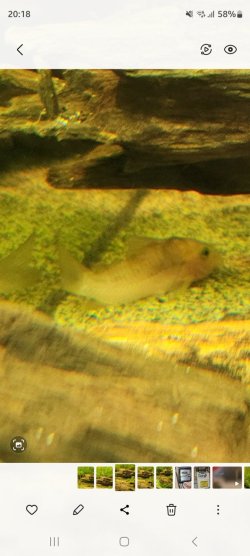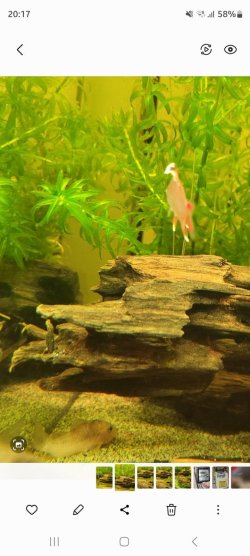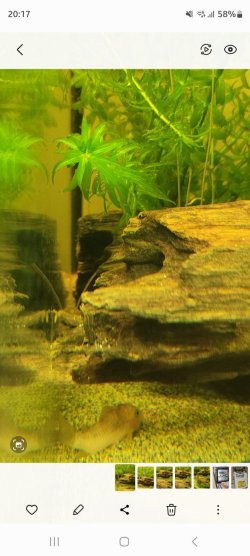Started losing colour in it's head about 3 to 4 days ago, was very noticeable, as the rest of his body was the usual dark colour. Over the past few days the loss of colour has extended. If you look closely, there is a pattern, almost like a straight line of colour loss. The pictures are not the best quality as I had to enlarge them due to the position he is in and my using my phone. He has lost more colour than the pictures portray. You would almost think he is dead, but he is moving around and active. He doesn't look especially skinny for his size.
I've had two other cory deaths in the past 2 weeks. Both times I found the corpse. One was of normal size and build but the other corpse was a skinny one I had noticed recently. I remember this one, as he was skinny when I got him about a month ago, but because he was small anyway (about 2cm) I didn't think too much of it, as the rest of the group from the LFS all looked great. I had purchased 8. With the deaths, I have 18 remaining.
I've not noticed any flashing or rubbing from any of the fish, apart from one corydoras, one time, a few days back.
The other fish (18 tetra and 4 small BN) all look great.
Water parameters are always nil for ammonia and nitrite, and 10-15 for nitrate. Temp 76F, pH 7.5, GH 6-7
I've had two other cory deaths in the past 2 weeks. Both times I found the corpse. One was of normal size and build but the other corpse was a skinny one I had noticed recently. I remember this one, as he was skinny when I got him about a month ago, but because he was small anyway (about 2cm) I didn't think too much of it, as the rest of the group from the LFS all looked great. I had purchased 8. With the deaths, I have 18 remaining.
I've not noticed any flashing or rubbing from any of the fish, apart from one corydoras, one time, a few days back.
The other fish (18 tetra and 4 small BN) all look great.
Water parameters are always nil for ammonia and nitrite, and 10-15 for nitrate. Temp 76F, pH 7.5, GH 6-7




